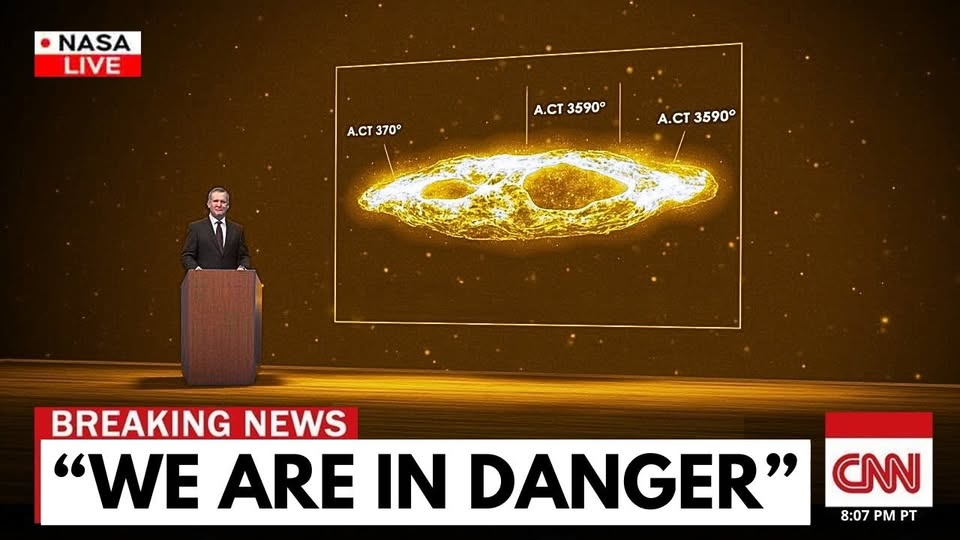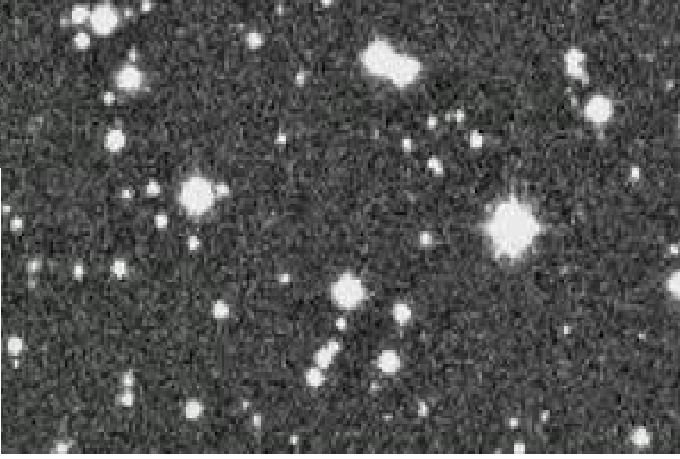In August 2025, NASA’s James Webb Space Telescope (JWST) turned its powerful gaze toward one of the most tantalizing objects ever seen in our solar system: the interstellar comet 3I/ATLAS. The new observations are already being hailed as a “bombshell” in the field of planetary science and interstellar studies — and for good reason. Webb’s infrared instruments have revealed an array of surprising chemical signatures and structural clues that challenge what we thought we knew about comets, both local and far-flung.
Here’s a deep dive into what the Webb data are telling us — and why this discovery might rewrite parts of how we understand comets, planetary system formation, and the chemical diversity of the galaxy.
A Quick Recap: What Is 3I/ATLAS?
First, some context. The comet known as 3I/ATLAS (also catalogued as C/2025 N1) was discovered on July 1, 2025, by the ATLAS survey telescope in Chile. Its unusually hyperbolic trajectory — essentially a path that doesn’t remain bound to the Sun — marked it immediately as an interstellar object (ISO), meaning it likely originated in another star system altogether.
It is only the third confirmed interstellar visitor ever identified, following 1I/ʽOumuamua (2017) and 2I/Borisov (2019).
Once 3I/ATLAS was flagged, observatories around the world and in space (Hubble, SPHEREx, etc.) began coordinating observations to track its path, brightness, composition, and activity. JWST’s involvement — especially using its near-infrared spectrograph (NIRSpec) — has just added a new, crucial layer to that effort.
The “Bombshell”: Webb Sees a Coma Rich in CO₂ — With Surprisingly Little Water
The big surprise from Webb’s observations is in the chemical makeup of 3I/ATLAS’s coma (the cloud of gas and dust that surrounds a comet’s nucleus). What stands out is the unusually high abundance of carbon dioxide (CO₂) relative to water vapor (H₂O). In fact, Webb’s data suggest one of the highest CO₂ : H₂O ratios ever recorded in a comet.
It’s not just CO₂, though. Webb and other telescopes have identified a mix of water ice, traces of carbon monoxide (CO), sulfur-bearing compounds (like carbonyl sulfide), dust, and other volatiles.
But the dominance of CO₂ is the oddity. For comets in our own solar system, water is typically the most abundant volatile when they approach the Sun. The contrast suggests that 3I/ATLAS is not just another comet — it’s a chemically exotic relic. Futurism+4Live Science+4Medium+4
One possible interpretation is that 3I/ATLAS formed in a region of its parent star system rich in CO₂ ices, perhaps near what astronomers call the “CO₂ ice line” in its original protoplanetary disk. Another is that intense radiation over eons may have boiled off or altered its water-rich layers, leaving a CO₂-dominated shell.
In other words, this object may have been processed (chemically and thermally) in a way quite different from comets that form in the relative safety of a quiescent solar system.
Physical Clues: Size, Structure, and Activity
Beyond chemistry, the Webb observations (and complementary datasets) also help refine our knowledge of 3I/ATLAS’s physical properties.
- Estimated size: Early size estimates based on brightness and other telescopic observations put 3I/ATLAS at roughly 7 miles (11 kilometers) across, potentially making it the largest interstellar object ever observed. However, more cautious analyses suggest a smaller size — perhaps 3.5 miles (5.6 kilometers) — though still large by ISO standards.
- Dust environment: Webb’s infrared imaging shows that the dust is optically thin at the wavelengths observed, meaning you can still see deep into the coma. However, there is evidence for enhanced dust density in the sunward direction, potentially from fragmentation of dust grains or directional jets.
- Early activation: Unusually, 3I/ATLAS is already showing comet-like activity (forming a coma and shedding gas) even while still at large distances from the Sun — farther out than typical comets begin to “turn on.” This triggered early speculation (somewhat sensational) that it might be a spacecraft or alien probe, though the data now support a natural explanation.
Thus, Webb’s data confirm that 3I/ATLAS is an actively sublimating comet — but one with a decidedly weird chemical profile and unusual dust dynamics.
Implications: What Does 3I/ATLAS Tell Us?
Why does this matter? Because 3I/ATLAS gives us a rare window into the building blocks of other planetary systems — material that has floated across interstellar space and is now passing through ours. Here are several key implications that astronomers are already discussing:
- Planet formation in other systems
The composition of 3I/ATLAS could reflect formation conditions — temperature regimes, irradiation environments, and molecular abundances — in its original star system. For instance, if many comets form with high CO₂ content, then planet formation models might need adjustments for volatile distributions. - Galactic chemical diversity
The extreme CO₂ dominance suggests that cometary chemistry across the galaxy may be far more varied than the solar system-centric models suggest. That, in turn, means that not all comets (or small icy bodies) follow the same “recipe.” - Age and origin clues
Some trajectory and dynamical modeling place 3I/ATLAS as originating from the Milky Way’s thick disk, a region of older stars. That hints it could be older than our solar system itself — perhaps 7 to 8 billion years old.
If true, studying it is akin to handling a time capsule from the ancient galaxy. - Interstellar object population insights
Because so few ISOs have been detected, each one gives us statistical leverage to estimate how many such objects drift through the galaxy. The fact that Webb (in concert with other telescopes) is detecting such unusual chemistry implies that when future ISOs are caught, we may expect more surprises. - Potential links to planet “seeding”
Some theories suggest that interstellar comets captured by young star systems could act as “seeds” for planet formation — delivering volatiles, dust, or even prebiotic material. 3I/ATLAS’s unusual composition might suggest that the materials available for such seeding can vary widely.
Caveats & the Road Ahead
While this Webb “bombshell” is exciting, it’s essential to emphasize that many of the findings are still preliminary and based on preprint papers rather than fully peer-reviewed results. Interpretation is ongoing, and alternative hypotheses remain viable.
In addition, observations from other wavelengths and instruments will be critical to either confirm or challenge Webb’s inferences.
- Mars-based observations: Because 3I/ATLAS’s closest approach to the Sun will leave it behind the Sun (as seen from Earth), orbiters around Mars may yield a better vantage point for observations of its active region near perihelion.
- Continued Hubble, SPHEREx, ground telescopes: Multiple observatories are working in parallel to monitor 3I/ATLAS across wavelengths from UV through visible to submillimeter.
- Spectroscopy of “missing” volatiles: In future, more sensitive instruments may detect molecules that currently escape detection, helping complete the volatile inventory.
- Trajectory and dynamical modeling: Further refinement of its path and speed may help pin down likely origin neighborhoods for the comet.
We are still in the early days of wringing information from 3I/ATLAS. But the Webb observations have already changed the baseline assumptions of what a comet — especially an interstellar one — can look like.
Conclusion: A Cosmic “Bombshell” Worth Exploding Over
When we think of breakthroughs, they’re often marked by a shift — a moment when something expected is overturned. That’s precisely what JWST’s observations of 3I/ATLAS are doing. The detection of a CO₂-dominated coma, coupled with the active dust dynamics and early outgassing behavior, constitutes a chemical “bombshell” in comet science. It reminds us that our solar system may not encapsulate all possibilities and that the galaxy holds many more strange travelers waiting to teach us.
As 3I/ATLAS speeds through our neighborhood — perhaps towards a perihelion in late October 2025 and beyond — it offers a fleeting, once-in-a-lifetime opportunity. Researchers are scrambling, instruments are pointed, and theories are evolving. Every data point will be precious. In the coming months, as more papers emerge, we will get a clearer picture of whether this comet was a freak of nature or a window into the diversity of planetary systems across the Milky Way.
Would you like a more “popular science” version or a technical breakdown of the Webb instrumentation and spectra?






